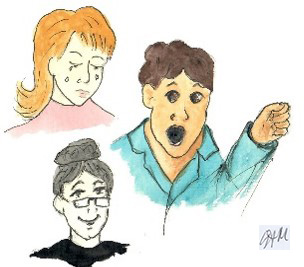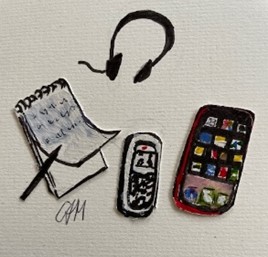 |
- that you try to find a quiet place to have your
conversation. This will help you both
your lipreader is sitting in the best place for them.
- if possible, give the context that you are speaking about.
This will be really helpful.
|
 |
- You get the lipreader's attention first – call their name or
wave at them. You could check throughout the
conversation that the lipreader is following the change in
topics as you go along. Following social conversations is
difficult as the topics change constantly. Knowing the
context is really important to enable easier lipreading.
|
 |
- make sure there is good light - NB remember not to sit
with your back to the window as your face will then be in
darkness. Ask if the person can see well enough. You
can't lipread in the dark!
|
 |
- your lipreader can see your face clearly and that your mouth can be clearly seen.
- you speak clearly and at a slightly slower rate. Don't over exaggerate the sounds or speak too slowly – this can lead to the listener/lip reader making mistakes and losing the natural rhythm of speech. Rhythm can help lipreaders to recognise what is being said.
|
 |
- that you speak in slightly louder voice than usual but NOT too loud and NOT too soft. As was said before clarity is what is needed -not too much volume.
- you remember that body language is useful too – facial expressions, gestures and your general appearance BUT try to keep reasonably still. It is very distracting if the speaker keeps moving about and sometimes the face becomes obscured. You can't lipread if you can't see the person's mouth.
|
 |
- you have pen and paper - if all else fails you can write down what is being said. The use of a microphone or better still a loop system can be very useful to some hearing aid wearers. Use technology such as personal amplifiers and speech to text apps on your mobile phones.
- and you could learn finger spelling - it is very useful to use finger spelling for names or to give the first letter/sound of words There is so much available in today’s world.
|